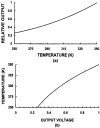New Frontiers for Applications of Thermal Infrared Imaging Devices: Computational Psychopshysiology in the Neurosciences
- PMID: 28475155
- PMCID: PMC5469647
- DOI: 10.3390/s17051042
New Frontiers for Applications of Thermal Infrared Imaging Devices: Computational Psychopshysiology in the Neurosciences
Abstract
Thermal infrared imaging has been proposed, and is now used, as a tool for the non-contact and non-invasive computational assessment of human autonomic nervous activity and psychophysiological states. Thanks to a new generation of high sensitivity infrared thermal detectors and the development of computational models of the autonomic control of the facial cutaneous temperature, several autonomic variables can be computed through thermal infrared imaging, including localized blood perfusion rate, cardiac pulse rate, breath rate, sudomotor and stress responses. In fact, all of these parameters impact on the control of the cutaneous temperature. The physiological information obtained through this approach, could then be used to infer about a variety of psychophysiological or emotional states, as proved by the increasing number of psychophysiology or neurosciences studies that use thermal infrared imaging. This paper presents a review of the principal achievements of thermal infrared imaging in computational psychophysiology, focusing on the capability of the technique for providing ubiquitous and unwired monitoring of psychophysiological activity and affective states. It also presents a summary on the modern, up-to-date infrared sensors technology.
Keywords: autonomic nervous system; computational psychophysiology; microbolometers; thermal detectors; thermal imaging systems.
Conflict of interest statement
The authors declare no conflict of interest.
Figures








References
-
- Ayata D., Yaslan Y., Kamasak M. Emotion Recognition via Galvanic Skin Response: Comparison of Machine Learning Algorithms and Feature Extraction Methods; Proceedings of the Medical Technologies National Congress (TIPTEKNO); Antalya, Turkey. 27–29 October 2016; p. 3129.
-
- Merla A., Romani G.L. Thermal signatures of emotional arousal: a functional infrared imaging study; Proceedings of the 29th Annual International Conference of the IEEE Engineering in Medicine and Biology Society; Lyon, France. 22–26 August 2007; [(accessed on 26 February 2017)]. Available online: http://ieeexplore.ieee.org/abstract/document/4352270/ - PubMed
-
- Merla A., Di Donato L., Rossini P.M., Romani G.L. Emotion detection through functional infrared imaging: preliminary results. Biomed. Tech. 2004;48:284–286.
Publication types
MeSH terms
LinkOut - more resources
Full Text Sources
Other Literature Sources

